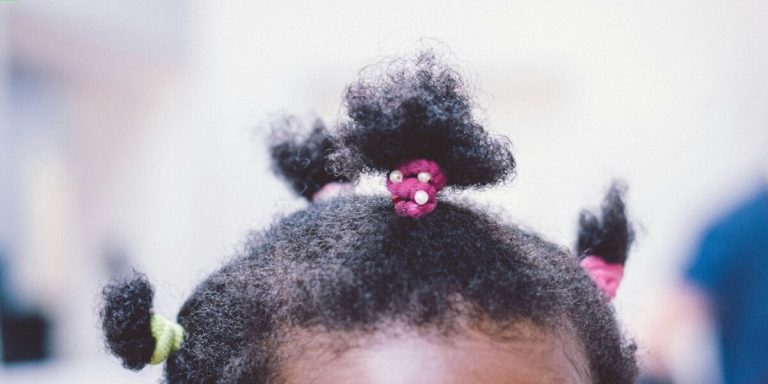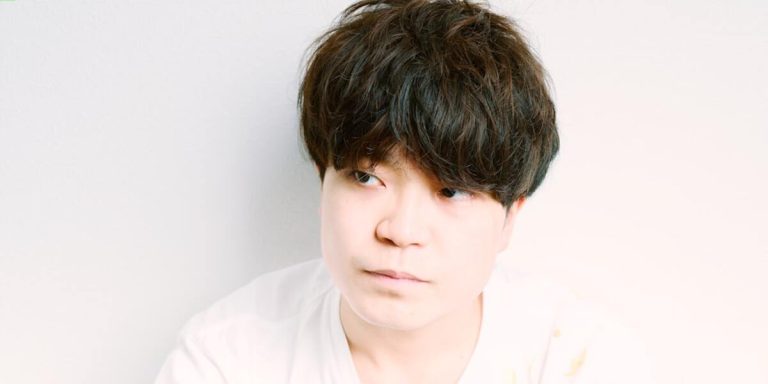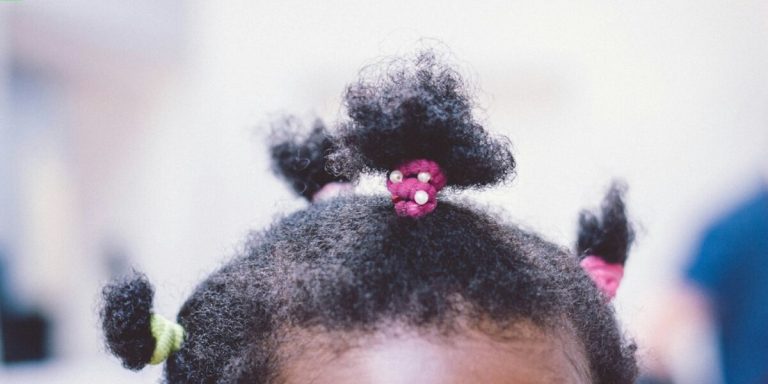How to Care for Toddler Curly Hair: A Comprehensive Guide
Understanding how to care for toddler curly hair can be quite a task, especially if you’re new to it. Curly tresses are beautiful but they require extra attention as compared to straight hair because their spiraling structure makes them prone to dryness and damage. The right approach will not only make your little one’s curls bounce with health but also instill in them the importance of proper hair hygiene from an early age.
This guide aims at providing you with comprehensive advice on managing those adorable ringlets effectively. With insights gleaned from top child hairstylists and pediatric dermatologists, we’ll cover everything – from choosing suitable products that respect toddler scalp sensitivity, regular moisturizing routines, detangling methods that won’t cause tears and much more! Buckle up for this dive into the world of maintaining toddler curls optimally while keeping everyday hassles minimal.
Did you know?
Did you know? Toddler hair is incredibly susceptible to damage because it’s thinner and has fewer cuticle layers than adult hair. This makes their curls more fragile, needing extra gentle care.
Understanding Toddler Curly Hair: Texture, Type, and Traits
When it comes to children, especially toddlers with curly hair, understanding their texture and traits is paramount. It’s a different game altogether compared to straight hair; curls have unique attributes that require distinct care techniques in 2023.
Curly toddler hair derives from the shape of the follicle – an oval or asymmetrical one results in curlier strands. Identifying your child’s curl pattern can range anywhere between softly curved waves (type 2) to tight coils (type 4). This distinction matters because each type has its own set of needs for hydration, detangling method and sensitivity level.
Despite these variations among types though, certain characteristics are consistent across all curly hairs: they tend be drier than flat strands since natural oils from the scalp find it hard reaching up through spiraling locks. Understanding this will justify why moisture-retention should become your best friend when maintaining your little ones’ crowning glory.
Remember! Caring for toddler curly means consciously choosing gentle products but more importantly knowing how individualistic every head of ringlets could be. With enough knowledge about what specific conditions characterize your child’s tresses you’ll soon master how to keep them at their springy best!
Examining the Unique Characteristics of Toddler Curly Hair
Toddler curly hair is distinctive and requires individual attention concerning its texture, type, and traits. Understanding these attributes will help you know how to care for toddler curly hair effectively.
The first thing to be aware of about your child’s curls is their unique texture. Curly toddlers’ strands are typically more dry and fragile compared to straight-textured kids due to the spiral-like structure that makes it harder for natural oils from the scalp to travel down each strand. Consequently, their locks need extra moisture via high-quality conditioners or specific curl-friendly products designed specifically for children’s sensitive scalps in 2023.
Another crucial aspect of caring for a toddler’s curly mane revolves around knowing its specific type according to Andre Walker’s Hair Typing System expanded by NaturallyCurly.com: Type 2 (wavy), Type 3 (curled/spiraled), or Type 4 (coiled). For example, coily locks often require heavier creams whereas wavy tresses perform well with lighter serums; thus identifying this can guide your product selection process as per current trends.
Identifying Your Child’s Curl Pattern for Optimal Care
Identifying your child’s curl pattern might seem like a daunting task, but it is an essential step in learning how to care for toddler curly hair. This information will enable you to choose the right products and adopt suitable hairstyling methods.
Let’s start with understanding that everyone has unique hair texture and patterns based on their genetics. In toddlers especially, these traits are still developing, so do not be alarmed if your baby’s fine curls turn into tight coils over time or even if they lose their curls completely as they grow older.
To identify a curl pattern, firstly dampen the hair slightly then observe from multiple angles. Ensure there is no product build-up when testing this since it can alter natural flow of locks.
Daily Regimen for Healthy Toddler Curls
Maintaining the curly hair of your toddler requires a daily regimen designed with precise care and affection. With unique textures and curl patterns, these bouncy locks can be quite delicate requiring more than just standard products from your local supermarket shelf. In 2023, there is increased awareness about using natural ingredients for haircare that aligns perfectly well with our topic.
Let’s dive into setting up this highly efficient daily routine which will ensure those curls stay healthy and shiny throughout their growing years. The first step in this regimen involves gentle cleansing – Curly strands have the tendency to become dry due to decreased oil distribution across the length so washing less often while still maintaining cleanliness would help retain inherent moisture content in them.
Next element of consideration here should be detangling during bath time, it becomes an essential part considering how knot-prone toddlers’ curly hair could turn out to be but remember never attempting it on dry curls instead within minutes post rinsing off conditioner apply wide-tooth comb or fingers starting at ends gradually moving upwards towards root minimizing breakage possibilities investing extra couple minutes would result smoother frizz-free curls promoting growth over time .
Establishing a Gentle Cleansing Routine
Establishing a gentle cleaning routine for your toddler’s curly hair is essential in maintaining the vitality of their locks. Here, we will discuss how to care for toddler curly hair without damaging it.
Firstly, remember not to shampoo daily. Curly hair can be particularly dry because scalp oils don’t travel down the strands as easily due to its texture; therefore, washing too often may lead to further dryness and frizz. It’s recommended that you wash your toddler’s curls twice or thrice per week with a sulfate-free shampoo designed specifically for children.
Secondly, when it comes time to cleanse those adorable tresses, ensure you use lukewarm water instead of hot — this protects their sensitive scalps while preventing excessive drying of the natural oils present in healthy curl patterns. Apply an appropriate amount of baby-friendly conditioner after using mild shampoo on those tiny crowns – this adds moisture back into each strand making them easier to detangle later.
Next up is hydrating right out-of-bath-time while creating an environment conducive for moisturized coils staying that way longer throughout busy active days most toddlers have nowadays! You can perform this by applying leave-in conditioners or specialized baby curl creams post cleansing rituals before letting air-dry naturally whenever possible.
Lastly but certainly importantly – always gently handle these young ringlets during entire routines from starting shower till finishing off styling any chosen adorable look afterwards since hard pulling might damage delicate new structures besides causing discomfort which none would wish upon our sweet little beings!
Moisturizing Strategies to Prevent Frizz and Dryness
Caring for toddler curly hair requires a daily regimen that focuses on moisturization to prevent frizz and dryness. With the right strategies, you can maintain your child’s curls in excellent condition, promoting both their health and beauty.
Starting with clean curls is essential when it comes to maximizing the benefits of moisturizing products. Use a gentle shampoo formulated specifically for curly hair once or twice per week depending on how dirty your toddler’s hair gets during playtime. Remember not to scrub hard as this may cause breakage; let the suds from the soap do all cleaning work.
The next crucial step in managing frizzy locks is deep conditioning. This process involves using an ultra-nourishing conditioner that penetrates into each strand’s core, thus providing profound hydration levels necessary for maintaining shiny and resilient spirals. You can purchase readily available brands or create homemade recipes comprising natural ingredients like avocado oil, coconut milk or honey which are known powerful hydrating agents.
Apply leave-in conditioner immediately after washing, while the hair is still wet. Make sure to detangle thoroughly using wide-tooth combs before applying, as they minimize damage during tangle removal. This step is crucial for maintaining the delicate textures of young children’s curls. Leave-in conditioners do not require rinsing and help keep moisture locked in longer than rinse-out conditioners, ensuring hair stays hydrated all day despite various environmental factors toddlers may encounter.
Selecting the Right Products and Tools for Toddler Curls
In the realm of toddler hair care, selecting appropriate products and tools is integral, especially when dealing with curly locks. More demanding than straight tresses, curls call for a more thoughtful selection process to ensure they remain healthy, defined and most importantly – knot-free. Delicate as their owners themselves are; these little spirals thrive on moisture-rich solutions that provide gentle nourishment.
Many myths about curly hair in toddlers persist, but washing their hair with just any generic baby shampoo is inadequate. The market in 2023 offers a wide range of brands, all claiming similar benefits. However, curly-haired toddlers need shampoos:
- Formulated without harsh ingredients such as sulfates
- Designed to preserve natural oils in the scalp
Using unsuitable products can lead to dryness and brittle ends that easily break.
Choosing Detanglers and Conditioners Designed for Young Children
The first step in mastering how to care for toddler curly hair is identifying suitable products tailored specifically to their fragile, tender tresses. Children’s hair typically differs from adult hair – delicate, softer, and more susceptible to breakage. Henceforth choosing gentle yet effective products becomes paramount.
Detanglers come into play here; they help unravel knots that easily form on little curls without causing unnecessary pain or discomfort during grooming sessions—a win-win situation both parents and toddlers will appreciate.
When selecting a detangler, please keep an eye out for ingredients such as Aloe Vera or Jojoba Oil known not only soothing but also officially assist with unlocking tangled strands seamlessly. Avoid those containing harsh chemicals like sulfates that could potentially strip away essential oils you want preserved!
Next up are the conditioners—don’t underestimate these magic potions! They’re crucial in maintaining your child’s curl definition by replenishing moisture levels lost through daily activities.
In 2023 we have witnessed an influx of brands developing kids’ targeted range of items rich in natural extracts which ensure optimal hydration while being absolutely safe—the perfect combination indeed! Some popular picks include Shea Moisture’s Mango & Carrot Kids Extra-Nourishing Conditioner loaded with nourishments derived directly from nature’s lap promising softness galore.
Safe Styling Accessories that Minimize Damage
Choosing the right styling accessories is fundamental when learning how to care for toddler curly hair. Here’s a list of some safe options that can minimize damage.
1. Wide-Toothed Combs: This comb type, notorious for its large gaps between teeth, effectively detangles tight curls without pulling on them harshly and causing breakage.
2. Gentler Hair Elastics: Avoid standard rubber bands as they tangle in curls easily and create unnecessary stress on your little ones’ delicate strands while removing it. Opt instead for fabric-covered elastics or spiral hair ties.
3. Soft Bristled Brush: A brush with soft bristles helps manage small knots in curls while also being gentle on your child’s sensitive scalp.
4. Satin Accessories: When fastening those precious ringlets into ponytails or pigtails, consider satin scrunchies over traditional elastics; their smooth material reduces friction leading to less split ends and frizz.
Conclusion
In essence, mastering how to care for toddler curly hair doesn’t have to be a tiring ordeal. With the right regimen and products, you can ensure your little one’s curls remain healthy and vibrant. It’s all about understanding their unique needs and being consistent in maintenance.
But remember, every child is different; what might work wonders on one set of curls may not necessarily produce the same results on another. So don’t get disheartened if it takes several attempts before you find that perfect routine or product line! For more information featuring comprehensive guides about hair care and maintenance, feel free to roam around our website — we’ve got loads of valuable resources waiting just for you.







